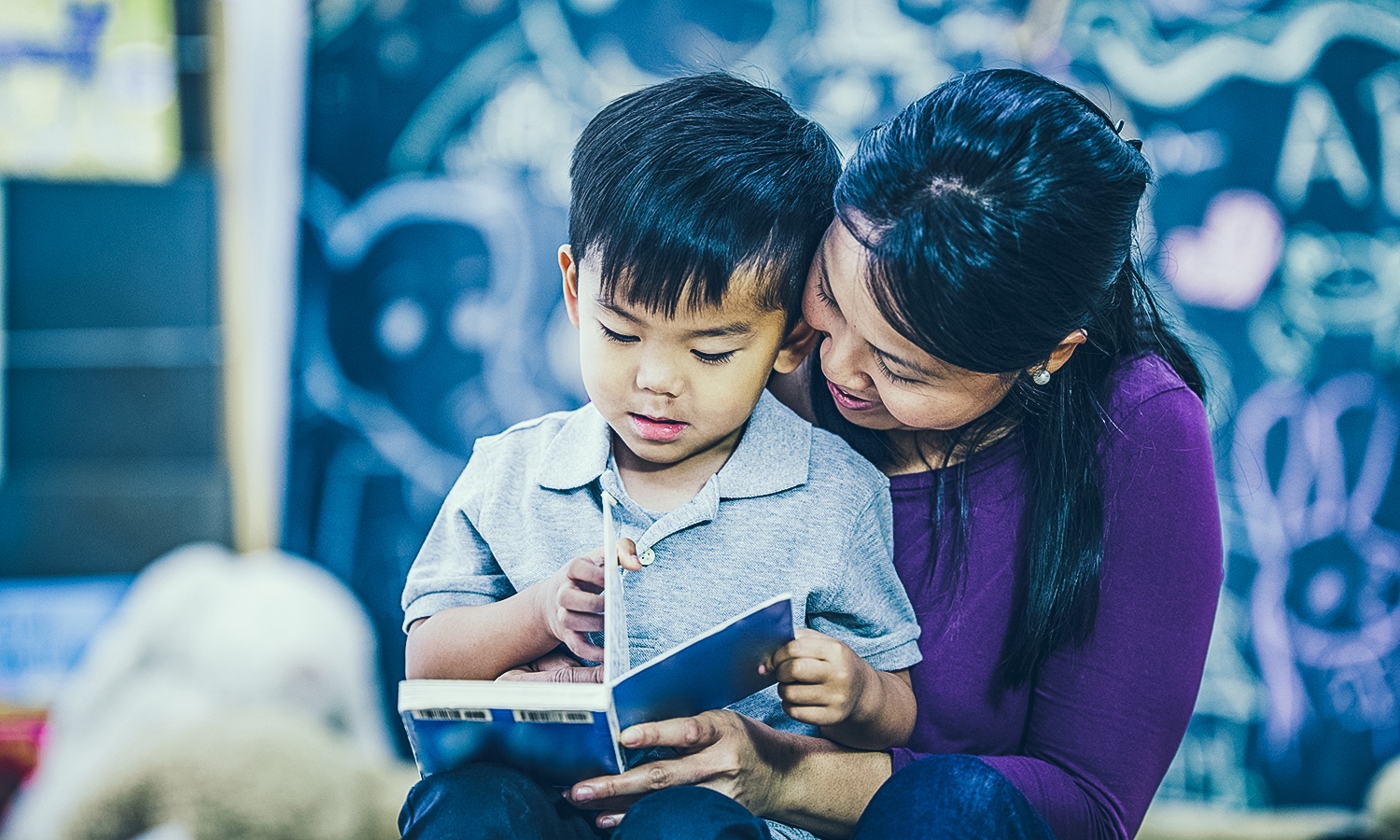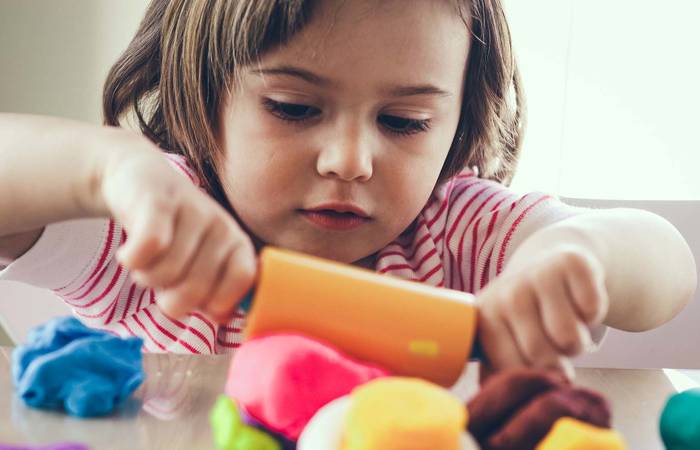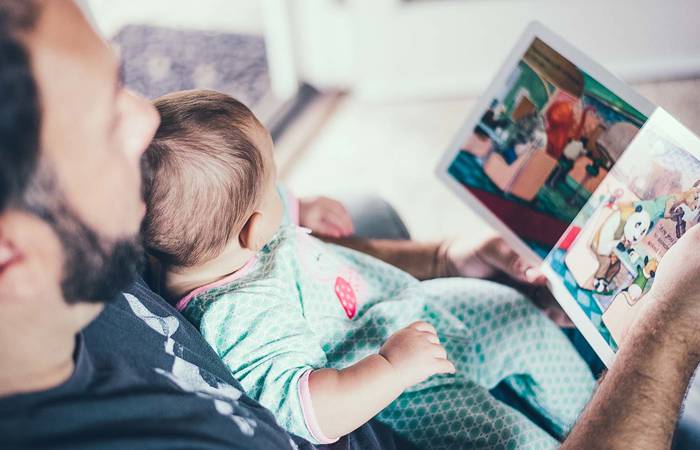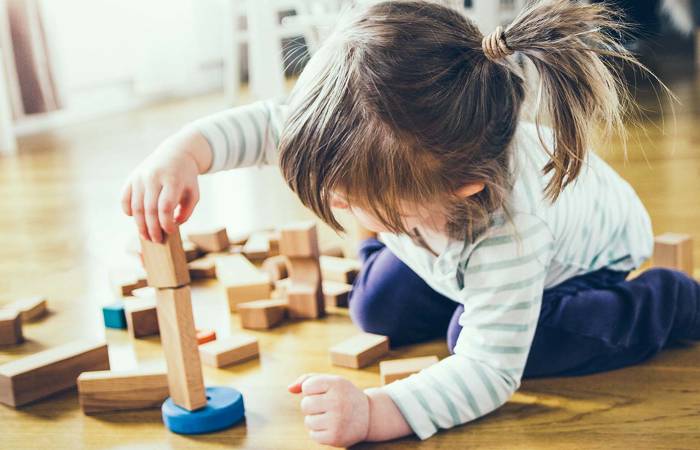Like what you see?
Sign up to receive more free parenting advice.
Thank you for subscribing to our newsletter!
Early Learning

Credit: iStock.com/FatCamera
At a time when most Australian parents are spending more time with our young children than ever before, the idea of how to engage children through play is more relevant than ever.
Professor Marilyn Fleer is the Foundation Chair in Early Childhood Education and Development at Monash University and has developed a teaching technique that may assist parents.
Professor Fleer developed a technique called Conceptual PlayWorlds to help educators teach young children concepts in science, technology and engineering.
She believes the model also offers potential for parents to use play to help their children navigate social or emotional challenges that arise from the Covid-19 pandemic.
“One of the key things at the moment for families is that children will be feeling isolated from their friends. Families can deal with that by creating a PlayWorld for them and with them,” says Professor Fleer.
While PlayWorlds offer endless variations, getting started with the technique involves just a few simple steps.
Stay up to date with the latest news and articles from First Five Years
Thank you for subscribing to our newsletter!
Step one: Choose a story
First, the parent or carer needs to select a story to help prompt the PlayWorld. Although, theoretically, any story your child knows can work, it pays to be choosy as you will be revisiting it over and over, changing elements of the story each time. For this reason it’s worth choosing a book you like too, with characters you enjoy.
“The story is going to act as a catalyst for a number of adventures the children will go on,” says Professor Fleer.
Professor Fleer believes complex plots work best as they will be more engaging and offer additional scope to vary the adventures.
Likewise, she suggests picking a story with a lot of characters and some dramatic tension.
Many children’s stories are good at dramatic tension: there’s often a problem that the characters face. In your PlayWorld parents and children are going to create new problems for the characters that you will solve together over time.
Step two: Design the space for your PlayWorld.
Let’s imagine your PlayWorld aims to help your child combat the issue of missing their friends. Here, parents and children might set up all the child’s soft toys in a circle on their bedroom floor.
“Give each toy a name of one of the characters in the story, or the name of their friends. A possum might be their best friend while a teddy might be their cousin,” says Professor Fleer.
Step 3: Decide on a signal that shows you are entering and exiting your PlayWorld.
Adult and child can come up with this together. You might decide on waving a magic wand, wearing a certain costume or saying a certain phrase to signal that the PlayWorld is starting or ending.
Step 4: What happens inside a PlayWorld?
In short, almost anything that allows a child to use his or her imagination. But think of a PlayWorld as a place for you and your child to go on adventures, solve problems, and expand their play while learning a concept.
The child can begin by reading the chosen story to their ‘friends’ by showing them the pictures.
“Then, with the help of their parents, an adventure arises. For example if you choose the book ‘The three little pigs’, after you read the book all the characters might decide to go on a holiday,” Professor Fleer says.
Of course, while planning the adventure, a number of problems that apply in the real world can make themselves known in the PlayWorld.
The following scenario could work well for a preschooler:
“Let’s say the three little pigs decide they want to go overseas. Together you can discuss what they need; like passports and visas. Then the discussion might turn to whether they are allowed to travel. If the answer is, ‘No, they can’t at moment’, the three little pigs will need to have a different kind of holiday. It’s a great way to explore the current situation in a way that’s not scary to young children. They are depersonalising the problem as it’s the three little pigs, not them it’s happening to,” says Professor Fleer.
All the adventures can be ‘shared’ with their soft toy friends, providing a way for children to feel connected to the real-life friends they aren’t seeing in person at the moment.
While it may seem daunting for parents to think of variation after variation of the one story, Professor Fleer says it sometimes helps to think of an adventure that can be supported by real world resources.
“The three little pigs could go back in time to when mummy and daddy were children, and mummy and daddy share stories about when they were young. Or the three little pigs might become astronauts, and families could use Google earth to look at the world from above,” she says.
To help explain germs, the three little pigs might become smaller and smaller, until they are microscopic in size.
“Then, the three little pigs can go out and find what the COVID virus might look like. They might try to find out how it gets transmitted,” says Professor Fleer, noting that parents will know if this is too scary for their child.
The results of the play can make difficult questions and concepts easier to explain.
“Right now, it could help young children understand why they can’t leave the house, or why they are being asked to wash their hands so often,” says Professor Fleer.







